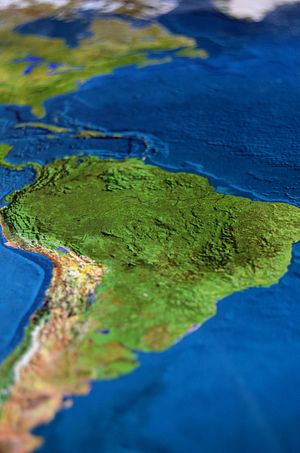Over the course of the 20th century, pendulum diplomacy was more than once been put into practice by big peripheral countries as a means to transform their relative handicaps into advantages. A classic example is Brazil’s President Getulio Vargas who, during the years that preceded the Brazilian declaration of war against the Axis Powers in World War II, openly flirted with Nazi Germany while running business as usual with the United States. In the end, Brazil harvested from both sides, its industrial production capabilities benefiting from both German and American direct investment.
Another good example comes from Northern Africa: Gamal Abdel Nasser’s reluctance to take sides during the Cold War. It proved a successful tactical move from Cairo which managed to maintain Egyptian sovereignty over the Suez Canal in 1956. To the extent that neither America nor the Soviet Union would risk losing a pivotal piece for their respective geopolitical schemes, Nasser wisely exploited a window of opportunity in order to place Egypt in a better position in world affairs. In Southeast Asia, Lee Kuan Yew’s Singapore well illustrates how an emerging nation can subsist on a two-headed foreign-policy strategy, combining excellent relations with both Beijing and Washington.
Granted, such pendulum diplomacy — swinging between two powerful sides — is not always an option for every country at all times, but can Latin American manage such a strategy in the space between the United States and China?
Latin America’s Foreign Policy Vocation
When it comes to external relations, there is nothing new under the sun: Being at a fork in the road is typical, rather than an exception, for developing countries. Curiously but not surprisingly enough, Latin Americans have witnessed in the past some modalities of pendulum diplomacy that have taken place in their own region.
In the late 1950s, Brazilian President Juscelino Kubitschek wielded political pressure over his American counterpart, John F. Kennedy, under the claim that an impoverished Latin America would become easy prey for the Soviet Union. If Kennedy wanted the region to remain impervious to communism, American funds would need to be forthcoming.
Under Kubitschek and his Operation Pan America (OPA), a development plan for the region, the Inter-American Development Bank was founded, and a number of bilateral agreements inked.
In the aftermath of World War II, the United States’s strategy toward Brazil and Argentina shifted. As the latter became increasingly resistant to Washington’s diplomatic approach, the former would fall in line and, to put it one way, become America’s watchdog for the region. In a sense, this fight between Buenos Aires and Rio de Janeiro (at the time Brazil’s capital city) for Washington’s recognition was interpreted as a proxy conflict for Latin America’s prominence at the time. In minor scale, Stroessner’s Paraguay also engaged in a pendular foreign policy in the 1950s and 1960s, when the country kept simultaneously paying court to Brazil and Argentina, two rivaling neighbors. As in other cases of such diplomatic swinging, Asunción certainty profited from this dance between the two.
Is Latin America Sexy Enough for Pendulum Diplomacy Yet?
In the past, pendulum diplomacy was a winning strategy for the region. But as those World War/Cold War days are long gone, can such a strategy still pay off?
It seems unlikely, for two main reasons: The realities of the United States under Trump and China’s longstanding practice of noninterference.
The United States under President Donald Trump is seemingly not attracted by the prospects of investing in ties with the rest of the continent. Apart from Canada, a long-time partner, all the rest falls within the rubric of “Latin America and the Caribbean,” just barely a relevant department for the White House over recent decades. Literally speaking, America has closed doors and raised walls to Latin Americans in 2017. By vociferating ugly words against Latinos – who were referred to en masse like outlaws, drug dealers and rapists during Trump’s campaign – the current administration has made it difficult for any country in the region to practice an openly pro-U.S. foreign policy. There’s still a sense of national pride that prevents regional leaders from embracing a “bandwagoning” orientation towards North America.
On the other hand, the Asia-Pacific in general, and China in particular, refrains from meddling with political controversies in the Americas. In the context of Xi’s Belt and Road Initiative, many nations are now pursuing foreign direct investments from Beijing – a move that does not necessarily entail normative attachments. On Asia’s end, there is an acute and ostensible interest in just a FEW goods from Latin America – food, energy, water – which are already being imported in large quantities, not to mention the “land grabbing” phenomenon said to be underway. Whereas Brazil attempts to escape this asymmetrical interdependence on Northeast Asia (China, Japan, South Korea) by inaugurating a trade route around Southeast Asia, and Paraguay invests all of its remaining diplomatic capital in strengthening its historical relationship with Taiwan, most other state leaders – with an emphasis on those from Peru, Panama, Argentina, Chile and Uruguay – look ever more convinced that there is no other way but surrendering to Asia’s appeal, primarily China but to a lesser extent Japan, India and South Korea.
At a time when many pundits show concern about the dangers of China’s rise and the risks of conflict lying therein – the “Thucydides’ trap” – Latin America is arguably faced with a trap of another nature, as the region today does not apparently have what it takes to becoming a strategic asset to either side of the Pacific Ocean – North America and Asia. Being a denuclearized, war-free zone for many decades now, it can pose no existential threat to the global masters in the short or medium term. Not to mention the politico-economic turmoil currently transforming the whole of the continent into a toothless dog whose barking is barely heard, be it in Washington or Tokyo-Delhi-Beijing. Not a comfortable situation for the peoples of Latin America, one might conclude.
































